Today's journal is written by one of the REU students, Rachel Valletta. Rachel is going into her senior year at Syracuse University, where she is majoring in geology and geography.
Sediment coring & my project
Today is only our fourth day of work, but already Daren and I have finished collecting 28 different cores! (See yesterday's journal for a detailed discussion and photos describing the sediment coring process.)
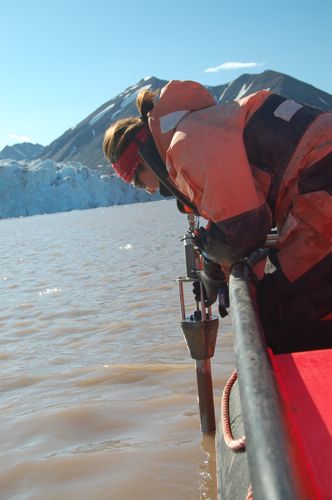
While sediment cores vary in length, nearly a dozen or so are over 40 cm in length. That might be long enough to find something called a Cesium (Cs) spike. The Cesium spike is a place in sediment cores that has a very high concentration of Cesium and marks 1963 exactly (the height of nuclear weapons testing). This can help us date the age of sediment layers.
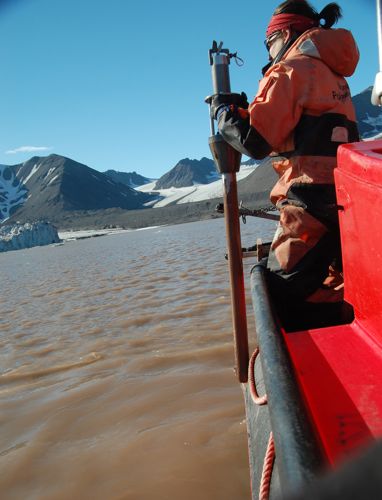
Sediment age is a very important aspect in my project, which will analyze changing sedimentation accumulation rates-an indicator of glacier behavior in a warming climate. It’s important to understand little stuff like this because it helps piece together a much bigger picture of the effects of humans on the world. Everybody knows the story of global warming, and here, in the Arctic, it’s hitting harder than anywhere else. Increased temperatures are accelerating calving rates, and we can see that reflected in the sedimentary record.
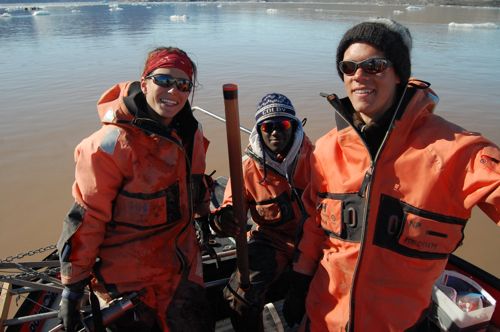
My first interest in geology…
Mark has asked all of us how we first got interested in the earth sciences, and to be honest I can’t remember a time that I wasn’t. I’ve been lucky enough to grow up in a family that appreciates camping, hiking, and the “great outdoors” in general. Our family still goes canoeing and fishing on a weekly basis! I’ve always been so fascinated in the shear scale of hillsides and mountains, the diversity of life, and the natural beauty of the earth. I find the most settling feeling in the entire world at the top of a mountain, after a long, grueling hike, and looking off into the distance seeing as far as the horizon allows. The silence is so comforting, and I’m reminded of a quote from my favorite poem, Desiderata: “Go placidly among the noise and the haste and remember what peace there may be in silence”. Exploring the outdoors allows me to obtain this true silence.

Don’t panic, though. For those of you who aren’t so inclined towards the outdoors and the earth sciences, I’ve put together a little list to live by ☺
‘The Non-Geologist’s Guide To Why They Should Quit Their Job & Pursue GeologyThe science that deals with the dynamics and physical history of the earth, the rocks of which it is composed, and the physical, chemical, and biological changes that the earth has undergone or is undergoing.’
1. You get to travel! Before college I’d never had the opportunity to travel internationally, and now I’m going into my senior year (at Syracuse-go Orange!) having traveled to both ends of the earth! Check out the photo of me in the Andes of Argentina! What’s even more amazing is that I don’t have to pay to see and work in these amazing places, scientists can get funded to research all around the world!
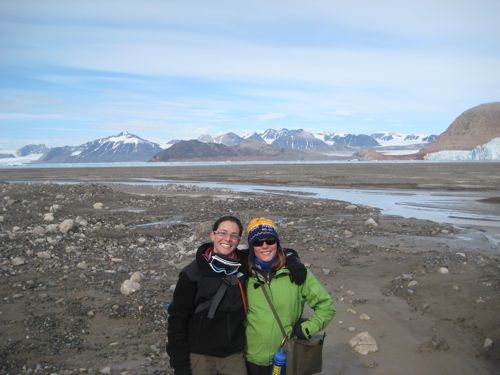
2. You get to meet incredibly diverse people! Our REU group represents different nationalities, colleges, languages, and life experiences, and Ny Alesund offers even more diverse people! Each of us brings our own unique flare to the local dynamic.
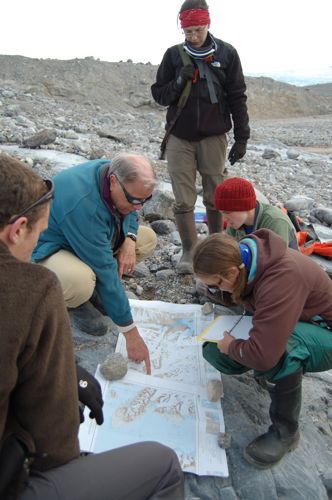
3. You can have a real impact on government and help change the world! The work we do here will ultimately add to our knowledge of the Arctic and how it’s changing. With this information we can affect environmental policies and government decisions. At the end of this trip we’ll even get to meet with some US congressional aids to share our work with.
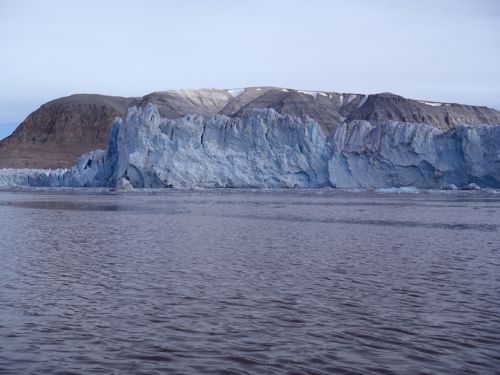
4. It’s out of our hands. GeologyThe science that deals with the dynamics and physical history of the earth, the rocks of which it is composed, and the physical, chemical, and biological changes that the earth has undergone or is undergoing. is one science that studies something men and women didn’t create. Every mountainside and giant glacier remind me of this. We didn’t create this world, but we’re starting to change it, and there’s so much out there that we can do to preserve our environment. Research here helps us learn what’s changing, how it’s changing, and how (if) we can address the issue.
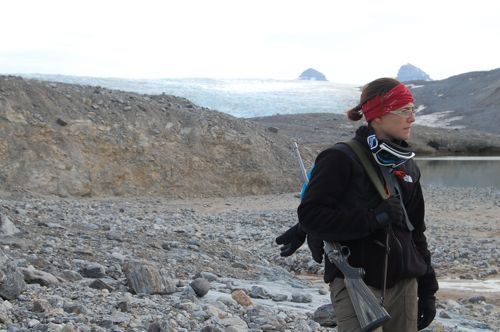
The sights and sounds here are invigorating and direct proof that the Arctic is teaming with life and energy, color and dimension, sound and emotion. There’s nothing like it-I see now why students here say they visited once and couldn’t stop themselves from returning. While it serves as a reminder about how beautiful the most remote places on Earth can be, it also evokes a deep-seated sense of urgency: effects of anthropogenic (human) activities are causing major changes here, and distant booms of calving glaciers repeatedly strike this thought for me. Activities where we live change the natural environment here much more than we think. One advantage we have is that, as young scientists, we are the future and we can help! Everyone can help, and it’s never too early to start the pursuit of change.
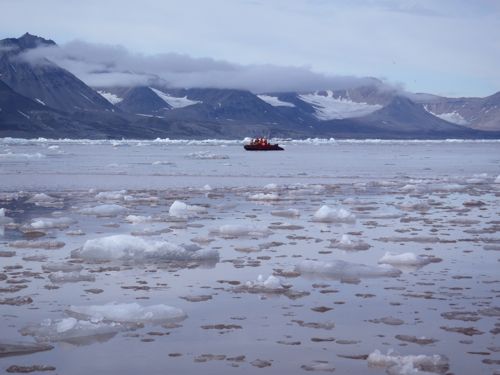


Comments